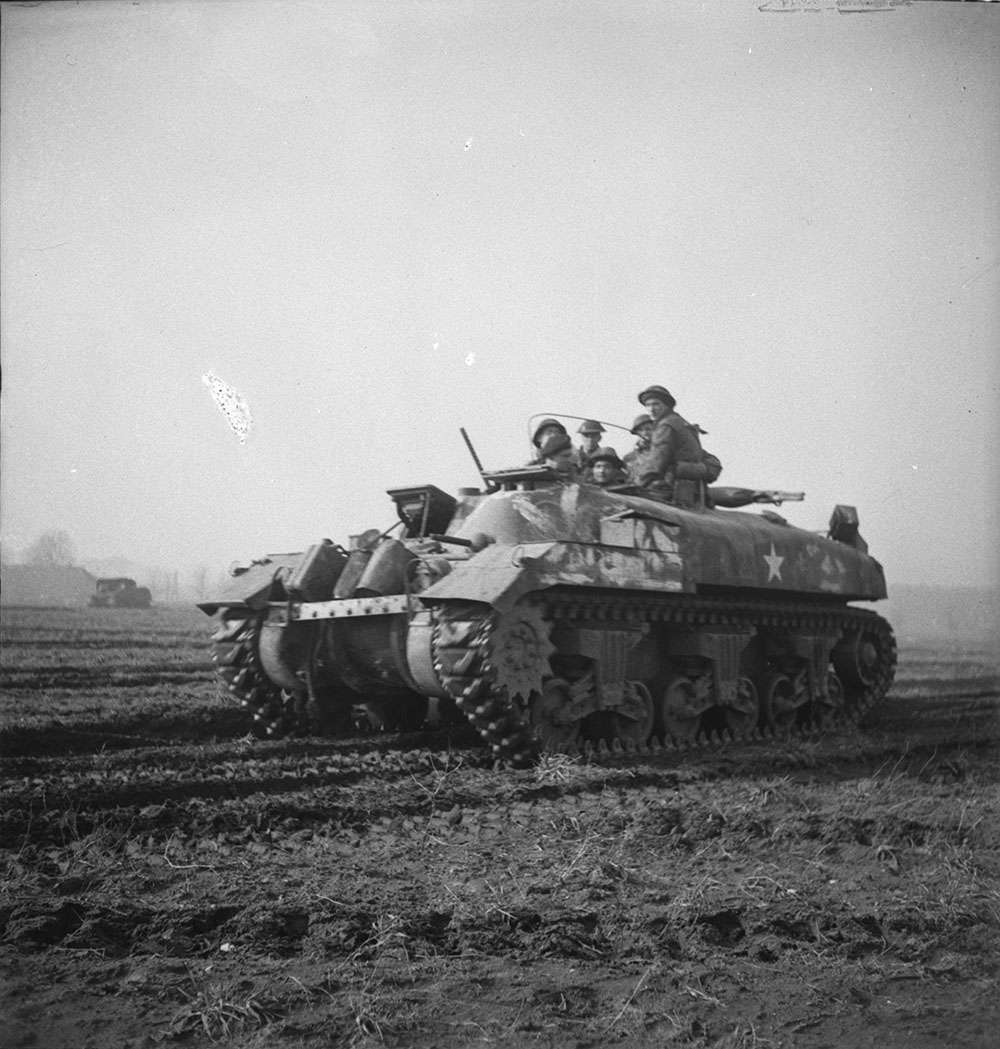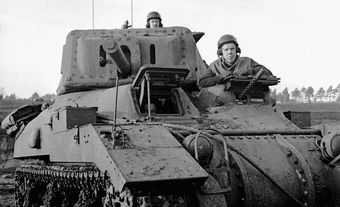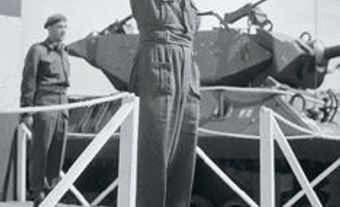“Kangaroo” is the nickname given to a series of military transport vehicles (APCs) designed by the Canadian army in 1944, during the Battle of Normandy. (See Second World War.) It was a modified version of existing armoured vehicles such as the M7 (Priest) self-propelled gun, the Ram tank and the Sherman tank. Major components of these vehicles, such as their turret, were removed, thus allowing them to be used to transport infantry soldiers, safe from enemy fire.

Origins of the Kangaroos
During the Battle of Normandy, the Canadian army sustained heavy losses. The infantry was often forced to move on foot, which made it vulnerable to enemy fire and prevented it from advancing at the same speed as the armoured vehicles. Moreover, there was a shortage of APCs to transport the infantry. Lieutenant-General Guy Simonds thus ordered the conversion of M7 (Priest) self-propelled guns into APCs. With their 105 mm gun removed, these vehicles could carry twelve soldiers. From 72 to 78 M7s were modified in this manner and were nicknamed Priest Kangaroos. They allowed the safe, rapid transport of infantry soldiers. The Priest Kangaroos were first used, with great success, during Operation Totalize in August 1944. The number of dead and wounded was significantly lower among the infantrymen carried by the Kangaroo APCs.
Ram Kangaroos
This success convinced the army to retrofit a number of Ram tanks and convert them into Kangaroo APCs. Produced in large numbers, but replaced by the Sherman tanks, the Ram tanks were seldom being used by the army. Their turret was removed to enable them to accommodate twelve infantrymen. These Ram Kangaroos rapidly replaced the Priest Kangaroos.
Kangaroos in Combat
The Kangaroo APCs were used until the end of the Second World War, notably during the campaigns in the Netherlands (see Liberation of the Netherlands) and Germany ( see Battle of the Rhineland). The Kangaroo APCs used in Italy (see Canada and the Italian Campaign) were converted Sherman tanks.
The Kangaroos enabled the infantry to advance at the same pace as the tanks, which allowed better coordination with the other armoured vehicles. Some Kangaroo APCs, such as the Badger Kangaroos, were even equipped with flamethrowers. From 1944 until the end of the war, two regiments were specifically assigned to use Kangaroo APCs: the 1st Canadian Armoured Carrier Regiment and the British 49th Armoured Personnel Carrier Regiment.

 Share on Facebook
Share on Facebook Share on X
Share on X Share by Email
Share by Email Share on Google Classroom
Share on Google Classroom



